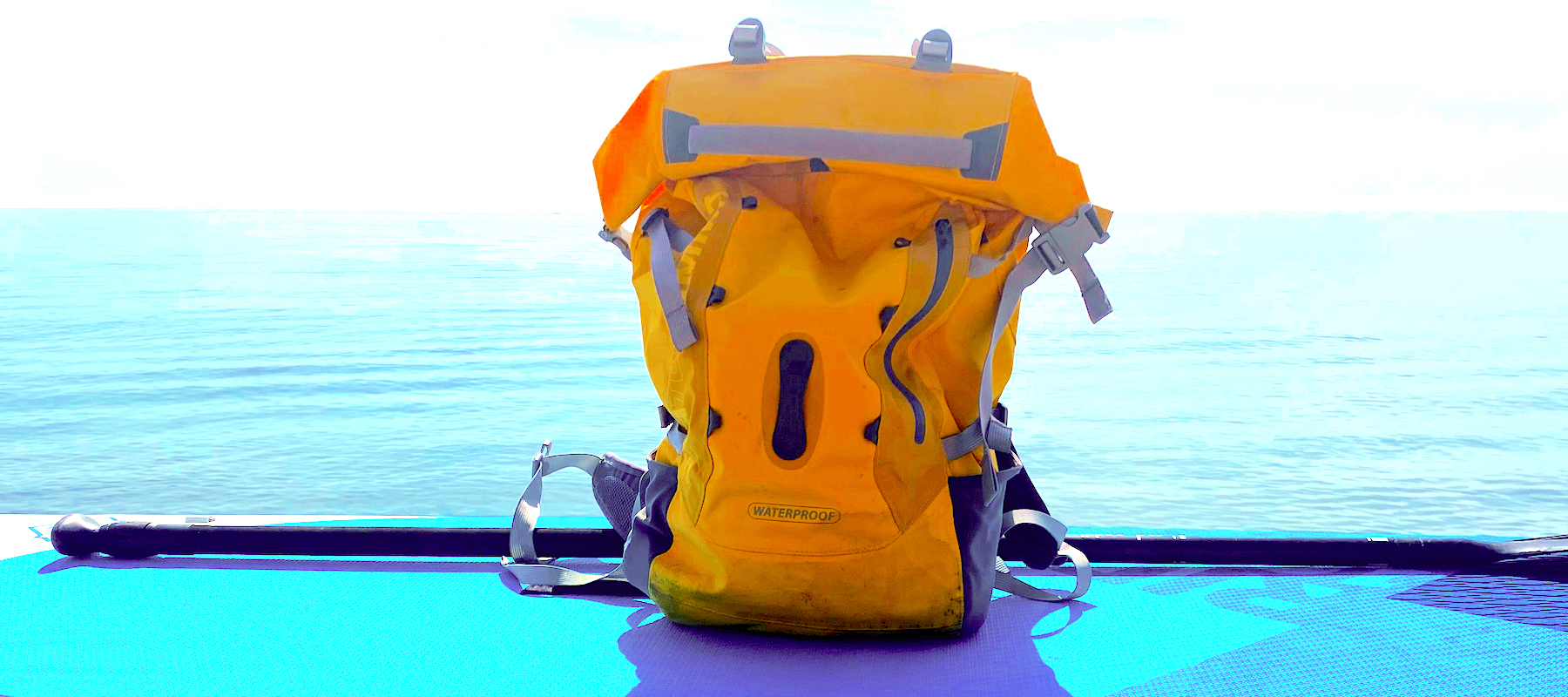Advnture Verdict
The Flow Dry Pack from Sea to Summit is an ultra-versatile, highly featured bag that can be used to keep kit completely dry during one- or two-day treks in torrential rain and snow, or employed for coasteering and canyoning adventures, or to act as a multifunctional storage option when you’re out paddling a kayak, canoe or standup paddleboard.
Pros
- +
Totally waterproof
- +
Very versatile
- +
Excellent harness
- +
Good external storage and carry capacity
- +
Dedicated hydration-system pouch
- +
Great build quality
- +
White interior makes locating gear easy
Cons
- -
Back can get sweaty
- -
No recycled content
- -
One size only
- -
Very expensive compared to the Red Original Waterproof Backpack
You can trust Advnture
Sea to Summit Flow 35L Dry Pack: first impressions
The Sea to Summit Flow 35L Dry Pack is an incredibly versatile beast, and that versatility comes from the fact that it’s essentially a top notch dry bag combined with an excellent harness that’s festooned with loads of straps and loops for carrying all sorts of kit for various outdoor pursuits.
• List price: $200 (US) / £185 (UK)
• Materials: TPU laminated, 420D nylon
• Weight (empty): 1,000g / 2lb 3oz
• Volume: 35L
• Variations available: None
• Harness sizes: One size
• Colors: Yellow / Black
• Compatibility: Day walks and weekend treks in wet weather, coastal and river adventures, SUPing and other paddle sports, canyoning / skiing
That all sounds good, but what about in practice? We put the Sea to Summit Flow 35L Dry Pack to the test in the mountains and on water to see how is measured up in relation to the very best daypacks available today.
Made with TPU-laminated 420D nylon, the main compartment is completely waterproof. With a generous 35L capacity, the top rolls down like a dry bag, and then clips into buckles on the side to complete the waterproof seal.
The interior of the bag is white, which may seem like an odd feature to highlight, but it does makes it surprisingly easy to locate specific items you have stashed away inside, plus there’s an interior pocket for keeping your things organized.

The external storage capacity is excellent. There’s a front pocket that zips shut – although this is water resistant rather than completely waterproof, so keep electronics and other items you really need to keep dry inside the main bag.
The backpack has mesh waterbottle pockets on each side, and there’s a dedicated pouch for carrying a hydration bladder, complete with a velcro hook for hanging the reservoir. Myriad straps, loops and tough tabs feature on the outside, allowing you to attach everything from trekking poles and helmets, through to skis. Bungees are sold separately, which – frankly – is annoying on such an expensive pack.
Other features include an excellent grab handle on the top and two compression straps on either side (with aircraft-quality alloy buckles).
All the latest inspiration, tips and guides to help you plan your next Advnture!
Sea to Summit Flow 35L Dry Pack: in the field

I’ve been using various iterations of this backpack since Australian brand Sea to Summit launched it well over a decade ago. I love the versatility offered by such an all-weather, multi-pursuit pack, and I have variously used it for commuting, canyoning, coasteering, kayaking, canoeing, hiking in horrible weather, scrambling in soggy mountains and cycling in the rain. It has never let me down.
It’s a very robust pack. The very first version I ever owned is about 15 years old now, and I still use it. The only thing that has perished is the zip on the front pocket, which I didn’t use often anyway, because it wasn’t waterproof (and doesn’t claim to be).

With each generation this pack has improved – although I must say the price tag has also risen exponentially. The harness on the new Flow pack is really top-quality, with super-comfortable shoulder straps made from quick-drying foam and breathable mesh, an easy-to-adjust sternum strap and a great waist belt, so you can fully load this pack and still carry it comfortably.
One gripe I do have, however, is that the pack sits directly on my back with no raised features to create any airflow – aside from a large inlaid Sea to Summit logo, which doesn’t cut the mustard – so it can be a bit sweaty to wear after a while.
It also seems a massive shame that – unlike on the Red Original Waterproof Backpack 30L – no recycled material has been used in the construction of this otherwise superb pack.


Author of Caving, Canyoning, Coasteering…, a recently released book about all kinds of outdoor adventures around Britain, Pat has spent 20 years pursuing stories involving boots, bikes, boats, beers and bruises. En route he’s canoed Canada’s Yukon River, climbed Mont Blanc and Kilimanjaro, skied and mountain biked through the Norwegian Alps, run an ultra across the roof of Mauritius, and set short-lived records for trail-running Australia’s highest peaks and New Zealand’s Great Walks. He’s authored walking guides to Devon and Dorset, and once wrote a whole book about Toilets for Lonely Planet. Follow Pat’s escapades on Strava here and Instagram here.

